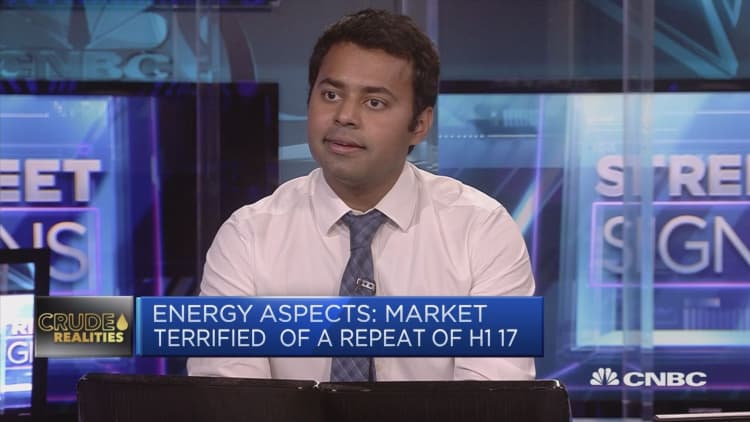Oil prices rose for a third straight session on Wednesday as OPEC said the market was gradually tightening after years of oversupply, though analysts said the 2018 outlook was less certain.
U.S. West Texas Intermediate (WTI) crude futures finished Wednesday's session 38 cents higher at $51.30 per barrel. WTI also closed 2 percent higher on Tuesday.
Brent crude futures, the international benchmark for oil prices, were up 20 cents at $56.81 per barrel at 1:37 p.m ET. Brent closed 2 percent higher the previous day.
On Wednesday, the Organization of the Petroleum Exporting Countries forecast higher demand for its oil in 2018 and said its production-cutting deal with rival producers was clearing the glut after more than three years of excess.
"OPEC and key non-OPEC oil producers continue to successfully drain the oil market of excess barrels," the group said.

OPEC, along with other producers including Russia, agreed to cut output by 1.8 million barrels per day (bpd) through March 2018 to balance the market.
Barclays raised its Brent crude price outlook for the first quarter of 2018 by $5 to $56 a barrel.
"We have finally shifted fundamentally from build mode to draw mode," Barclays said in a note.
Brent has so far averaged $52.70 per barrel this year. By the end of the year, Barclays said it expected Brent to have averaged around $53 per barrel.
Despite this, Barclays said oil could dip again in 2018, with second-quarter 2018 Brent likely to fall back to $48 a barrel, thanks largely to rising global output.
Saudi Arabia trimmed crude supplies to its biggest buyers in Asia, sources told Reuters, a sign that it is meeting its cut commitment.
Bullish forecasts from the International Monetary Fund also supported prices. The IMF projected global economic growth of 3.6 percent this year and 3.7 percent for 2018, an indication that fuel demand would rise.
Still, longer-term indications were less rosy. Barclays said it expected "a return to build mode next year," while PVM's Stephen Brennock said the IMF viewed the economic recovery as being "on thin ice."

"Several market participants will have taken solace from yesterday's rally but the jury is out on whether it has the legs to go the distance," Brennock wrote.
The United States is not participating in the OPEC-led supply cut, and its output has risen 10 percent this year to more than 9.5 million bpd, preliminary weekly figures show.
Speaking at the Reuters Global Commodities Summit, Vitol chief Ian Taylor said U.S. output would climb by another 0.5 million to 0.6 million bpd next year before flattening.
Overall, Taylor said, markets were "boringly rangebound" and that "margins are very, very tight."
Later on Wednesday, the American Petroleum Institute will release weekly U.S. fuel inventory data, followed by official figures from the U.S. Department of Energy on Thursday.
U.S. crude inventories probably fell for a third straight week, while refined product stockpiles also likely declined, a Reuters poll showed.
— CNBC's Tom DiChristopher contributed to this report.

